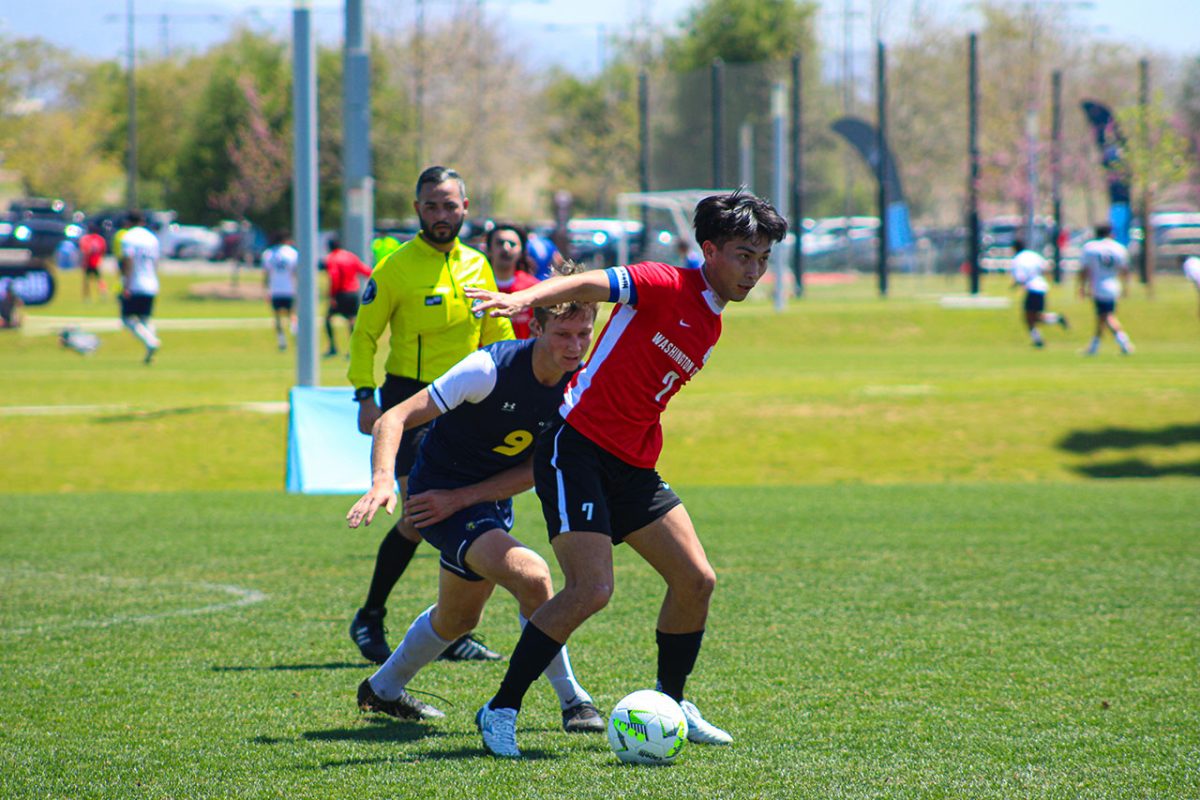WSU has started the 2023–24 men’s basketball season 2-0. They beat Idaho 84-59 to open the season and then took down Prarie View 83-65, an overall point differential of 43 points. While not the top echelon of competition, an average margin of victory of 21.5 points is nothing to scoff at.
Men’s basketball head coach Kyle Smith is known around town as an analytics guy, with his staff buying into the progressive philosophy. In a “Moneyball”-style way of thinking, Smith and his staff determine playing time and rotation through a mix of the eye test and statistical analysis of value.
Through two games, the analytical approach has worked.
Smith has a rotation that has proven to work, albeit in the small sample size, and his starting five has been highly efficient. Myles Rice, Joseph Yesufu, Andrej Jakimovski, Isaac Jones and Rueben Chinyelu work well and play fantastically together.
In the season opener against Idaho, it was the Jones show. While Jakimovski had a team-leading 21 points in 50% shooting and going 3-of-8 from beyond the arc, Jones proved to be the catalyst on both sides of the ball.
He had 13 points on 5-of-8 shooting from the floor, adding nine rebounds, four assists and two steals. He had a 30.3% usage rate, the highest on the team, meaning the offense went through him. Jakimovski had the higher game score at 15.6 (Jones had 12.3), but Jones was responsible for 19 points and only allowed 4.4 points, finishing with a net points of 14.6, the only Coug in the double-digits in the category.
Jones played well on both sides of the ball, the best true two-way player on the court. He had an offensive rating of 97.8 and a defense rating of 68. His stop percentage of 109.4 was head and shoulders above the rest of the team.
As for other players, Kymany Housinsou proved he could be a productive defensive stopper. In 21 minutes, His defensive rating of 89 was solid and his stop percentage of 74.4 is absolutely something to key in on as the season progresses.
Offensively, WSU is deep in its potential to find production. Chinyelu had eight points but had an effective field goal percentage of 67% and an offensive rating of 105.6. A lot of his value comes from his work off the ball and his ability to draw fouls in the paint. He shot eight free throws and drew 9.4 fouls per 100 possessions. While he shot just 50% from the line, the value of free shots is still there.
Most of the non-starters did not play enough to really get a feel for their production through the first game, so only time will tell.
In the second game, once again, Jones and Jakimovski were the analytical darlings, with Oscar Cluff stepping up big in his 23 minutes. Jones had a game score of 17.5, Jakimovski had 16.8 and Cluff barely outperformed both at 17.6.
Cluff scored 17 points and produced 19.3 on offense while allowing just 7.7 on the defensive end. Despite a low usage rate of 16.3%, he made his mark. He was 100% efficient, not missing a shot, finishing with a 171.3 offensive rating and maintaining his defensive production with a defensive rating of 97.4.
Jakimovski improved defensively in game two, finishing with a rating of 73.5, thanks in large part to his 11 stops and his defensive rebound rate of 20.1%.
While Rice was the primary ball handler on the offensive, an effective role by the guard with his usage rate of 27.5 and the fact that he produced 18.4 points, he also allowed 11.5 points. While Yesufu can unlock a new level offensively, Rice can be a more effective player next to Houinsou, where the defensive scheme is more versatile.
With Housinou, Rice can be hidden in a zone, put in the gap between Housinou/Cluff or Housinou/Yesufu so it is harder to target him beyond the three-point line. Off the ball, he does not have to guard the ball handler and Jakimovski has the height and physicality to help on potential pick-and-rolls Rice has to pick up a big man on a pick-and-roll.
It’s still early, but this team has looked strong so far.























